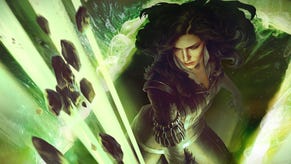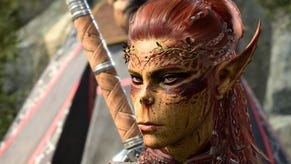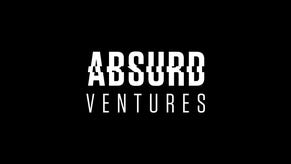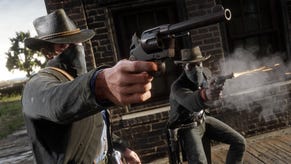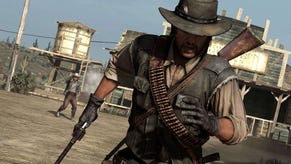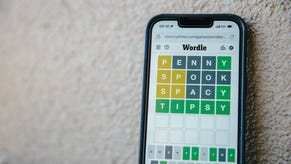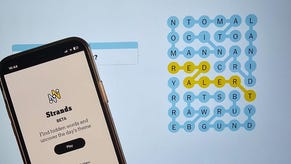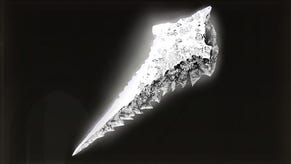Red Dead Redemption 2 pelts - how to get perfect pelts, hides and skins when hunting
Get the best quality pelts, hides and skins when hunting in Red Dead Redemption 2.
Learning how to get Red Dead Redemption 2 pelts through hunting is an optional but incredibly useful skill, helping with camp upgrades, earning new equipment with the Trapper, progressing Challenges, feeding your gang and much more.
There are all manner of birds and beasts to kill and skin, and even some Legendary Animals and Legendary Fish to track down, and if you use the right weapons and the right methods, you can earn some serious dollar. From the right equipment and the nuances of tracking to stalking your prey and making the most money out of each respective slaying.
On this page:
- How to get perfect pelts, skins and hides in Red Dead Redemption 2
- How to transport pelts and body parts in Red Dead Redemption 2
- How to prepare for hunting for pelts in Red Dead Redemption 2
- How to hunt and track pray in Red Dead Redemption 2
- What else you need to know about getting hunting for pelts in Red Dead Redemption 2
For more help, our Red Dead Redemption 2 walkthrough explains the requirements for fully completing the game's many story missions.
How to get perfect pelts, skins and hides in Red Dead Redemption 2
Let's get right to the meat of things - how to get perfect pelts, skins and hides. (If you want to know the basics, scroll up and jump to the relevant section.)
To maximise the value of a pelt, you'll need to make sure of three very important factors:

- Your choice of weapon and ammunition
- The quality of the animal
- The type of final hit
Let's break these down further.
How to get use the right weapon and ammunition
Animals in Red Dead Redemption 2 are divided into various categories - from Small to massive creatures like Bears - and you can only achieve a perfect kill (and thus a perfect pelt) by using the correct weapon, ammo type and type of hit.
Though you can technically get a Perfect kill with any weapon (such as repeater, rifle and sniper rifle) but you'll need to have maxed out your Dead Eye in order to get a Critical Hit. Until then, you'll want to focus on the following:
- Bow:
- Fatal hit on small animals using a Small Game Arrow only
- Critical and Fatal hit on medium to large creatures with regular arrows
- Critical and Fatal hit on medium to massive animals with Poison Arrows
- Critical and Fatal hit on massive animals only with Improved Arrows
- Throwing Knife: Critical and Fatal hit on medium creatures, or Poison on medium to massive
- Varmint Rifle: Fatal hit on medium creatures only
- Repeater: Critical and Fatal hit on medium creatures only with any ammo (apart from Explosive)
- Rifle: Critical and Fatal hit on medium to massive creatures with all ammo (apart from Explosive)
- Sniper rifle: Critical and Fatal hit on medium to massive creatures with any ammo (apart from Explosive)
- Shotgun: Critical and Fatal hit on massive creatures using Slug rounds only
Thanks to gtakiller0914 on reddit for the help filling in the gaps above.

The quality of the animal
The quality of a kill is affected by two very important (and not initially obvious factors):
- The health of the animal
- The manner in which it was killed
In order to determine the health and status of an animal, press R1 / Right Bumper while still hunting and you'll see its current condition on-screen. If its a skinny or ill beast, the quality of the parts you'll be able to harvest will be reduced as a result.
Inversely, if it's a young or prime specimen, this value will be relatively higher. One star represents a Poor quality, two stars Good, and three is for Pristine.

In other words, some prey are better left in favour of a better target.
The type of final hit
Now comes the amount of damage done to an animal in order to bring it down. Remember that kills are defined into three categories - Poor, Good and Perfect - and these gradings work in conjunction with the quality value applied to an animal prior to its kill (see previous paragraph).
So if you make a Poor kill, even a Pristine animal will produce a Poor carcass. But, if you want a Perfect carcass on a Pristine animal, you'll need to pull off a Perfect kill.
The quality of the kill comes down to how you use your bow to apply one of three kinds of specific damage to an animal during a hunt:
- Normal Damage - when you hit an animal anywhere other than its vital organs or critical organs
- Critical Damage - caused when you successfully strike a critical organ such as the lungs or stomach
- Fatal Damage - made when hitting an organ such as the heart or brain (usually leading to a one-shot kill)
Maxing out your Dead Eye ability (you can do this by completing 'Goodbye, Old Friend' in Chapter Six of the story) will reveal these organs to you and increase your damage output, making hitting Critical or Fatal Organs much easier. But keep in mind that making such precise hits is incredibly hard on small critters and is a rule best applied to larger (and thus higher value) game.
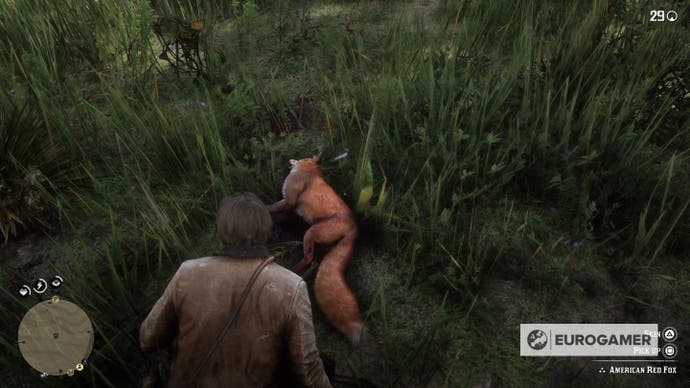
There are two other important factors to consider when preparing to make your kill: distance and the angle of penetration. If you reduce your scent, approach upwind and use scenery to reduce how obvious Arthur is to his prey, you'll be able to increase your proximity.
The closer you are, the bigger your target will be, as well as reducing the chance of an arrow missing or dropping. However, using a scoped rifle with a high velocity cartridge can produce similar results at a distance.
Penetration is one of the most common reasons for an arrow not killing an animal as expected, so it's an important element to consider. So if you want to be sure of a headshot, you'll need to aim from the side in order to increase your chances of striking the brain. Avoid larger bones where you can and reach those precious organs.
With this, you should be able to get Perfect Pelts, Hides and Skins. If you want to know which of these 'massive' creatures are, read on...
How to transport pelts and body parts in Red Dead Redemption 2
Each animal produces its own unique set of body parts, depending on their size and species. And each one has a particular use. You can cook meat at a campfire, which turns it into consumable food, while items such as teeth and claws and be used to fashion Talismans (which help reduce effects such as Dead Eye cooldown and weapon degradation).
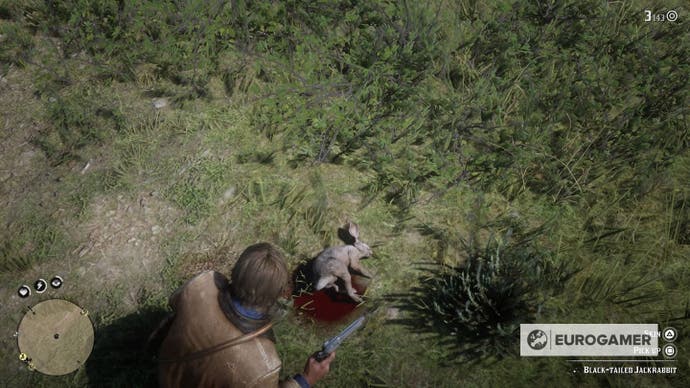
An animal carcass or the body parts harvested at the site of a kill can be sold off at most general stores, butchers and Trappers. You can also bring them to one of your established camps and handed over to Pearson who will then use them to unlock camp upgrades and satchel upgrades. You can also donate them to the gang camp to increase your food stores.
If you do skin a carcass without taking it to a store / trapper / camp, then the body parts will be added to your satchel for use later on. The following animals are considered 'massive' and will be too large to transport:
- Alligator
- Bear
- Bison
- Bull
- Cow
- Elk
- Ox
- Moose
When a kill is made, you'll now have the option to transport the carcass away from the site of a kill, but only if they are small enough. The smallest - birds for example - will be transferred to your satchel, while massive ones cannot be moved and will need to be skinned and looted where it was slain.

You can load up your horse with more than one carcass, but there is a limit to how much your poor horse can carry. You can either stow one medium and one large carcass, or the pelt of one massive animal. You can also opt to stow one moderate animal carcass on either side of your mount. You can also choose to stow multiple pelts as long as they're moderate, medium or large in size.
Body parts taken from an animal that is rare to a respective region will net you 25% more in value when sold to a store in that region, than it would in one where it's common. And if you own the Ultimate or Special Edition of the game, all sales will have a +10% modifier as standard for every part/pelt/carcass you sell. This is automatically active when you redeem the Special or Ultimate edition code.
How to prepare for hunting for pelts in Red Dead Redemption 2
Though the game teaches you how to hunt and track animals as part of the main story - the Aftermath of Genesis and Exit Pursued by a Bruised Ego missions respectively - there's always much more to learn.
Much like Far Cry 5 before it, animal pelts and parts have a quality level that can drastically reduce if you're careless with how you dispatch each creature in your sights. This means you can't just throw sticks of dynamite at deer and expect to have a pristine pelt at the end of it (even if it sounds like a lot fun).

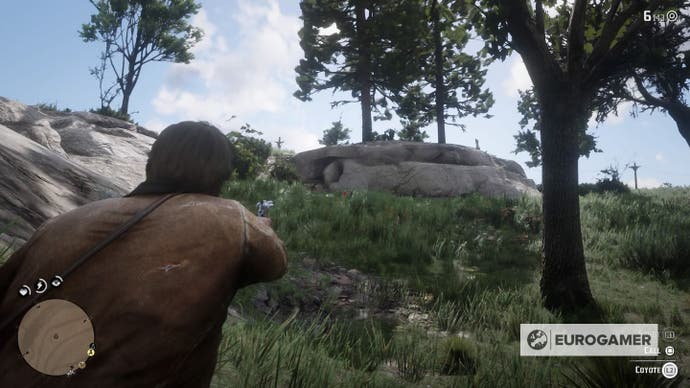
So, in order to maximise the quality of your kill, you'll need the hunters weapon of choice: the bow. This weapon is unlocked in the Chapter One mission Aftermath of Genesis. It's quiet and powerful enough to kill an animal in one shot, if you're close enough and hit a vital organ.
Red Dead Redemption 2's hunting bow supports six different types of arrow, but only four of them apply to hunting:
- Arrow (purchased, regular ammunition)
- Improved Arrow (crafted, +15 damage)
- Small Game Arrow (crafted, -20 damage, very effective against small prey)
- Poisoned Arrow (crafted, +5 damage, ideal for bringing down larger prey)
Other weapons will also work - as our how to get perfect pelts, skins and hides explains.
To improve your success while on a hunt, it also helps to have two other consumable accessories with you: baits and cover scents. You can buy these from stores across the map, with the latter increasing the chance of attracting animals in a given area, and the latter reducing the amount of scent you give for a limited time (making it far easier to approach them from downwind, or if the wind suddenly changes mid-hunt).
How to hunt and track pray in Red Dead Redemption 2
Whether you're hunting smaller prey or much larger game, the same process of tracking still applies. Certain areas of the map will play home to specific species, and once you've entered a certain area you'll be able to use tracks, droppings and the remains of a kill to begin your hunt. Using your Binoculars will also allow you to study and track an animal.


Once in an area, and with your bow equipped from your horse (make sure you have this before you leave your mount - better to check first than be ready for a kill, only to pull out a rifle by mistake), click in both analogue sticks to enter a Detective Mode-style view known as Eagle Eye.
Here, animal tracks will be represented by glowing trails on the ground. To select one, look at it and press R1 / Right Bumper.
There are also more subtle signs of a certain animal in the vicinity, such as tracks, excrement and the remains of eaten prey (if you're hunting a predator) so use every clue you can to increase your chances of finding a trail.

When you exit Eagle Eye mode (click both analog sticks in together again) the trail will now be represented by a glowing path on the ground, so follow this slowly to approach your prey. Now, while in Eagle Eye mode, look out for a subtle visual effect that emanates from Arthur. This represents you scent, and along with the sound you make and the size of your body, it'll give you away if you don't know how to reduce their impact.
Clicking in the left analog stick to enter crouch will reduce your size and quieten your footsteps, but in order to mask your scent you'll need to make sure this effect isn't moving in the direction of your prey.
This means they're likely to smell your smelly cowboy body as you approach, so flank around to ensure you're upwin. You can also use Cover Scents to drastically reduce your scent, which last for a limited time.

Once you've made your kill, now it's time to skin your prey and make the most of its various items. A kill will be represented by a yellowed paw icon on the mini-map (it'll go grey once you've skinned it). To skin a smaller animal of its parts, press Square (X on Xbox) when next to the carcass.
What determines the quality of a skin, pelt or hide? A variety of factors, and requires some prior preparation to get right.
What else you need to know about getting hunting for pelts in Red Dead Redemption 2
Looking for some extra advice? These quick tips delves into the basic concepts further to help with your career as a bona fide hunter in Red Dead Redemption 2.
- Always equip your bow before you leave your mount.
- Make sure you're stocked with enough arrows.
- Use the right arrows on big and small game.
- You can get a Perfect kill with a throwing knife and a poison throwing knife, but you can't with a tomahawk.
- Don't use guns or explosives when hunting as bullet holes and explosions drastically reduce the quality of the carcass.
- Hold R1 (or right bumper) when near your prey to 'Study' them and add more info about that animal to your Compendium.
- Press Square (or X on Xbox) to call an animal and create a brief window to line up a headshot / heartshot.
- Max out Dead Eye mode (complete Goodbye, Dear Friend in Chapter Six of the story) to reveal vital body parts.
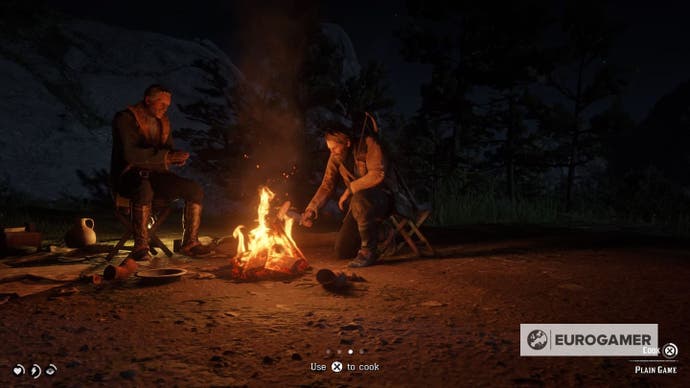
- You can technically get a Perfect kill with other weapons (such as repeater, rifle and sniper rifle) but you'll need to have maxed out your Dead Eye in order to get a Critical Hit.
- Sell carcasses fast to avoid decay (which reduces its value).
- If you die when carrying a carcass on your horse, it will disappear.
- Skins that were pre-skinned prior to sale will reduce their value by 50%, so always bring the entire carcass when selling it.
- If you kill an animal that's considered rare in its region, be sure to sell it to a store in that region - you'll get 25% more in value if you do.



